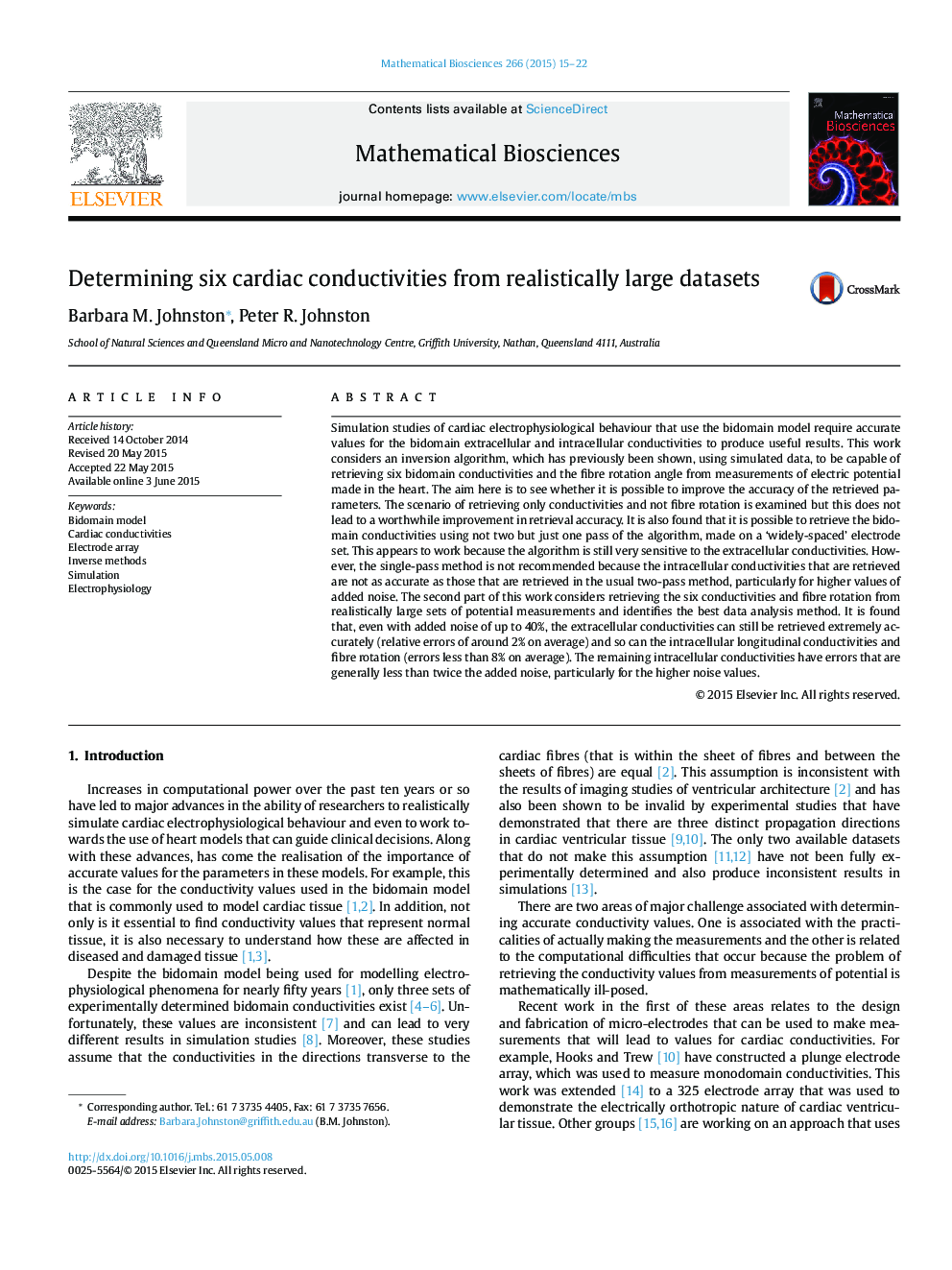| کد مقاله | کد نشریه | سال انتشار | مقاله انگلیسی | نسخه تمام متن |
|---|---|---|---|---|
| 4500001 | 1624014 | 2015 | 8 صفحه PDF | دانلود رایگان |
• Six cardiac conductivities can be found accurately from heart potentials.
• Results are found for realistically large sets of simulated potentials.
• It is possible to retrieve six conductivities using only widely-spaced electrodes.
• This is not as accurate as using both closely and widely-spaced electrodes.
Simulation studies of cardiac electrophysiological behaviour that use the bidomain model require accurate values for the bidomain extracellular and intracellular conductivities to produce useful results. This work considers an inversion algorithm, which has previously been shown, using simulated data, to be capable of retrieving six bidomain conductivities and the fibre rotation angle from measurements of electric potential made in the heart. The aim here is to see whether it is possible to improve the accuracy of the retrieved parameters. The scenario of retrieving only conductivities and not fibre rotation is examined but this does not lead to a worthwhile improvement in retrieval accuracy. It is also found that it is possible to retrieve the bidomain conductivities using not two but just one pass of the algorithm, made on a ‘widely-spaced’ electrode set. This appears to work because the algorithm is still very sensitive to the extracellular conductivities. However, the single-pass method is not recommended because the intracellular conductivities that are retrieved are not as accurate as those that are retrieved in the usual two-pass method, particularly for higher values of added noise. The second part of this work considers retrieving the six conductivities and fibre rotation from realistically large sets of potential measurements and identifies the best data analysis method. It is found that, even with added noise of up to 40%, the extracellular conductivities can still be retrieved extremely accurately (relative errors of around 2% on average) and so can the intracellular longitudinal conductivities and fibre rotation (errors less than 8% on average). The remaining intracellular conductivities have errors that are generally less than twice the added noise, particularly for the higher noise values.
Journal: Mathematical Biosciences - Volume 266, August 2015, Pages 15–22
